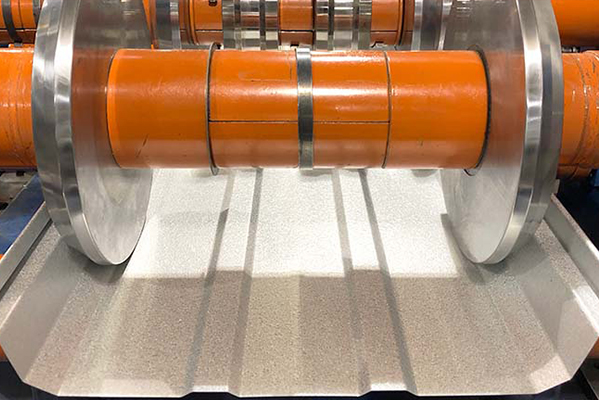Navigation Menu
Contact Us
- Email:
- info@wxavatar.com
- Address:
- Yurong Village, Yuqi Street, Huishan District, Wuxi, China.
Release Date:Mar 29, 2025 Visit:51 Source:Roll Forming Machine Factory
Panel roll forming equipment is a specialized type of machinery used in the metal fabrication industry to produce continuous panels with consistent cross-sectional profiles. This process involves feeding a metal strip (usually steel, aluminum, or other alloys) through a series of rollers that gradually bend and shape the material into the desired form. Roll-formed panels are widely used in construction, automotive, aerospace, and appliance manufacturing due to their high precision, efficiency, and cost-effectiveness.
How Panel Roll Forming Works
The roll forming process is a continuous bending operation that transforms flat metal sheets into panels with specific profiles. Here’s a step-by-step breakdown:
1.Uncoiling the Metal Strip – A metal coil is loaded into the machine, and the strip is fed into the roll forming system.
2.Pre-Punching or Notching (Optional) – Some machines include punching or cutting stations to add holes or notches before forming.
3.Roll Forming Stations – The strip passes through a series of roller dies, each set incrementally shaping the metal until the final profile is achieved.
4.Cutting to Length – After forming, the panel is cut to the required length using a flying cut-off saw or hydraulic shear.
5.Stacking or Packaging – The finished panels are collected, stacked, or packaged for shipment.

Key Components of Panel Roll Forming Equipment
A typical panel roll forming machine consists of:
Decoiler – Holds and feeds the metal coil into the machine.
Straightener – Ensures the metal strip is flat before forming.
Roll Forming Stations – Multiple sets of rollers that progressively shape the metal.
Cutting System – Precision cutting tools (e.g., saws, shears) to trim panels to length.
Control System – CNC or PLC-based automation for precision and repeatability.
Output Conveyor – Transports finished panels for collection.
Advantages of Panel Roll Forming
High Production Speed – Capable of producing long, continuous panels quickly.
Consistency & Precision – Ensures uniform profiles with tight tolerances.
Material Efficiency – Minimizes waste compared to other forming methods.
Versatility – Can produce a variety of profiles (roofing, wall cladding, gutters, etc.).
Cost-Effective – Lower tooling costs than stamping or extrusion for large runs.
Applications of Roll-Formed Panels
Construction – Roofing sheets, wall panels, and structural components.
Automotive – Body panels, chassis parts, and trim.
Appliances – Refrigerator panels, HVAC ducts, and enclosures.
Aerospace – Lightweight structural panels.
Conclusion
Panel roll forming equipment is a highly efficient and versatile manufacturing solution for producing metal panels with complex profiles. Its ability to deliver high precision, speed, and cost savings makes it a preferred choice in various industries. As technology advances, modern roll forming machines continue to improve with automation, enhancing productivity and quality in metal fabrication.